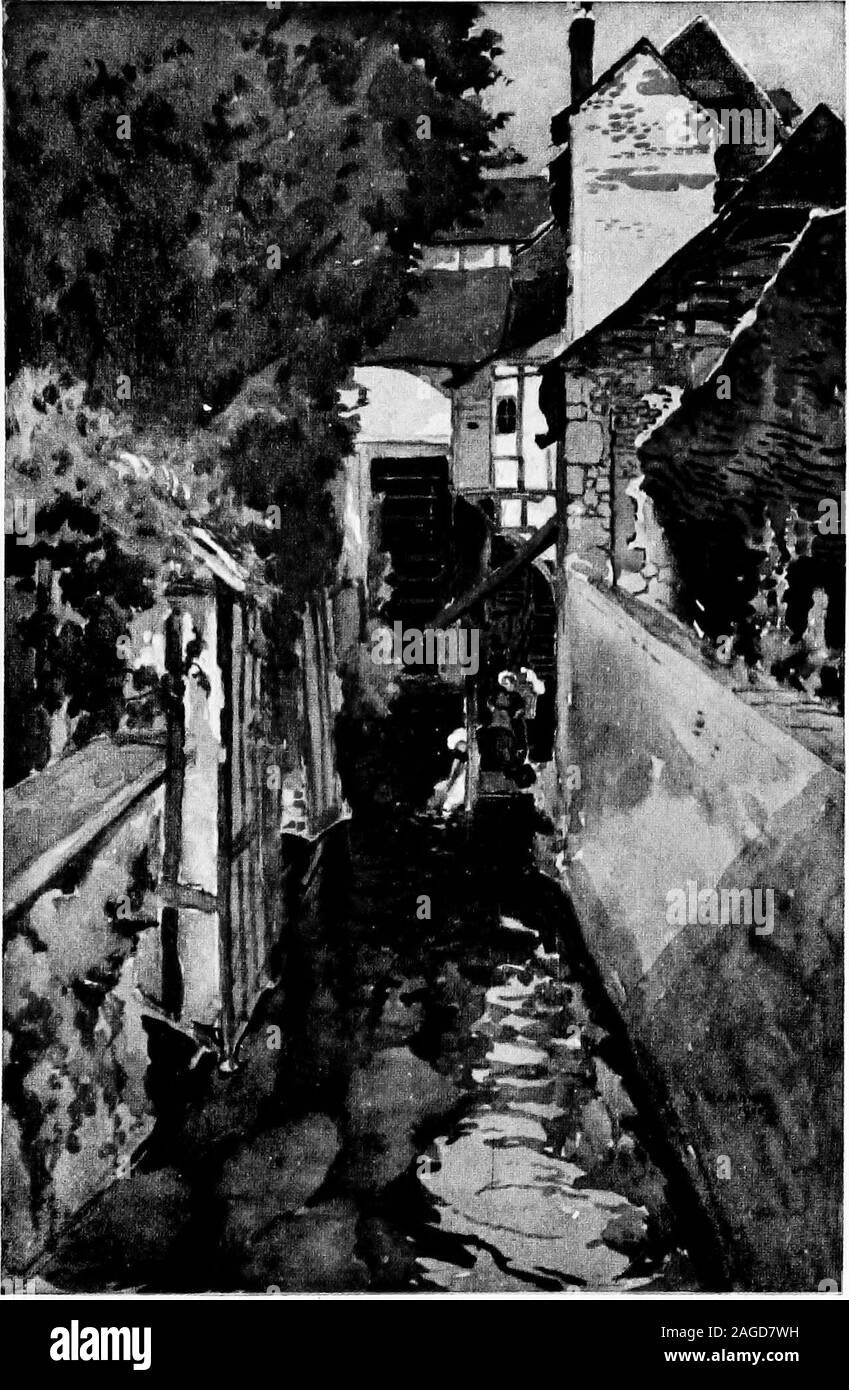. Castles and chateaux of old Touraine and the Loire country. flects the fagade of the chateau in its placidsurface. Of course, this is all very artificialand theatrical, but it is a pretty conceit never-theless. The other source, known as the Grande Source, joins the rivulet some hun-dreds of yards below the Bassin du Miroir. The Chateau de la Source is a seventeenth-century edifice, of no great architectural beautyin itself, but sufficiently sylvan in its surround-ings to give it rank as one of the notable placesof pilgrimage for tourists who, said a cynicalFrench writer, take the chateaux o

Image details
Contributor:
The Reading Room / Alamy Stock PhotoImage ID:
2AGD7WHFile size:
7.1 MB (536.3 KB Compressed download)Releases:
Model - no | Property - noDo I need a release?Dimensions:
1278 x 1955 px | 21.6 x 33.1 cm | 8.5 x 13 inches | 150dpiMore information:
This image is a public domain image, which means either that copyright has expired in the image or the copyright holder has waived their copyright. Alamy charges you a fee for access to the high resolution copy of the image.
This image could have imperfections as it’s either historical or reportage.
. Castles and chateaux of old Touraine and the Loire country. flects the fagade of the chateau in its placidsurface. Of course, this is all very artificialand theatrical, but it is a pretty conceit never-theless. The other source, known as the Grande Source, joins the rivulet some hun-dreds of yards below the Bassin du Miroir. The Chateau de la Source is a seventeenth-century edifice, of no great architectural beautyin itself, but sufficiently sylvan in its surround-ings to give it rank as one of the notable placesof pilgrimage for tourists who, said a cynicalFrench writer, take the chateaux of the Loiretour a tour as they do the morgue, the MoulinRouge, and the sewers of Paris. In the early days the chateau belonged to theCardinal Brigonnet, and it was here that Bol-ingbroke, after having been stripped of histitles in England, went into retirement in 1720.In 1722 he received Voltaire, who read him his Henriade. In 1815 the invading Prince Eckmiihl, withhis staff, installed himself in the chateau, when, after Waterloo, the Prussian and French ar-. The Orleannais 43 mies were separated only by a barrier placedmidway on the bridge at Orleans. It was herealso that the Prussian army was disbanded, onthe agreement of the council held at Anger-ville, near Orleans. There are three other chateaux on the bor-ders of the Loiret, which are of more thanordinary interest, so far as great countryhouses and their surroundings go, though theirhistories are not very striking, with perhapsthe exception of the Chateau de la Fontaine, which has a remarkable garden, laid out byLenotre, the designer of the parks at Ver-sailles. Leaving Orleans by the right bank of theLoire, one first comes to La Chapelle-St. Mes-min. La Chapelle has a church dating fromthe eleventh century and a chateau which isto-day the maison de campagne of the Bishopof Orleans. On the opposite bank was theAbbaye de Micy, founded by CloAris at the timeof his conversion. A stone cross, only, marksthe site to-day. St. Ay